What would a noodle dish be without some nice juicy additions to it? Eating the noodles plain is OK, but it’s not as fun as adding vegetables, meat, and some poached egg to spice up the dish.
Today, we’ll include the perfect recipe for an instant noodle dish and how to poach an egg in ramen. The steps go as follows:
- Boil noodle water in a pot
- Cook the ramen for one to two minutes
- Add the seasoning pack to make a soup
- Put in a cup of vegetables and cheese
- Crack one or more eggs in the pot with the rest
- Stir until everything’s poached and cooked
- Serve in a bowl with some beef slices and garnish
In the rest of the article, I’ll cover the steps in detail, so you know what to prepare before mealtime.
What You’re Going to Need
- A medium-sized pot
- Two cups of water
- A noodle packet of your choice
- Vegetables of choice (I recommend cabbage and bok choy)
- One or more eggs (per choice)
Video Tutorial
The video below perfectly explains how to poach an egg in ramen and get an incredibly juicy and delicious meal.

Step 1 – Boil Noodle Water in a Pot
The first step in boiling and cooking is to get a medium-sized pot, one you’d typically use for spaghetti sauce or chicken stock, and pour two cups of water.
It’s best to wait for it to boil because adding the noodle brick before the right time will make it soggier the longer it cooks. Adding everything after that point will ensure it’s all cooked but is not soggy or chewy.
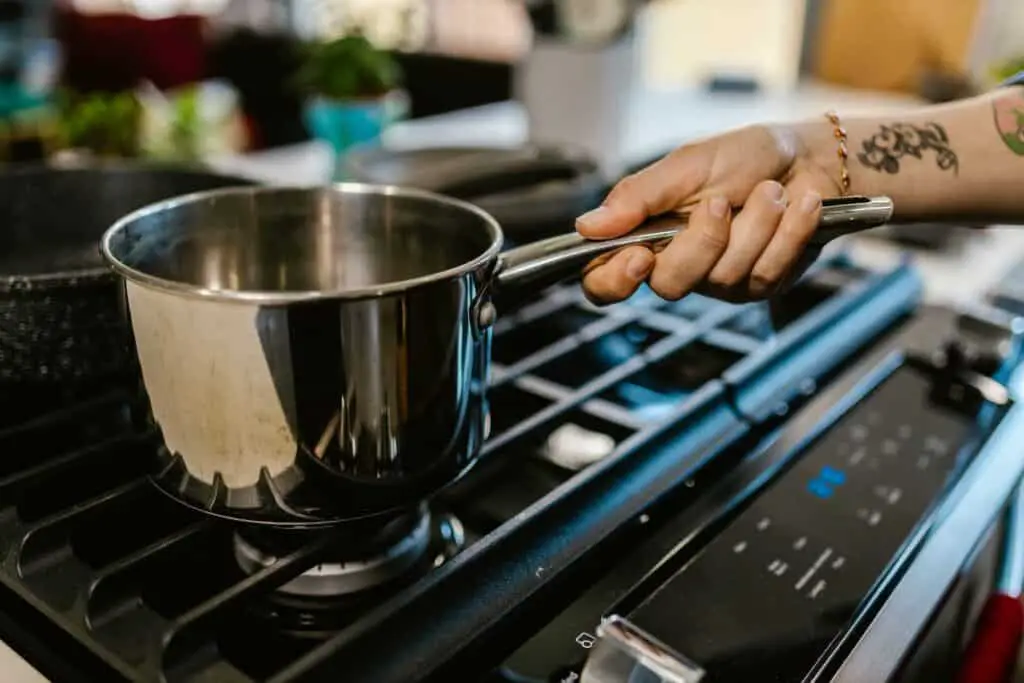
Step 2 – Cook the Ramen for One to Two Minutes
We all know ramen has noodles, which is the best part of the entire meal. When the water begins to boil, open the packet and put the noodle brick in the pot.
You can break them apart or split them in half if you prefer a shorter noodle for your soup. If not, leave the noodle brick and let it separate on its own while it cooks.
Occasionally stir the mixture so it can all cook evenly, and after a minute or two tops, prepare for the next step – adding seasoning and vegetables.
Step 3 – Add the Seasoning Pack to Make a Soup
When a minute has passed, open the seasoning packet that came in the package, and stir it into the mixture. The broth will change colors and become a delicious, seasoned soup. You can also blend your noodle seasoning.
If you buy a noodle package with more than one packet of seasoning, pour all of it into the mixture. If you want to spice up your ramen, put all the chili seasonings into the broth and some chili flakes on the side if you have extra.
However, if you want to make ramen less spicy, use just half of the chili packet, or avoid putting any of it.
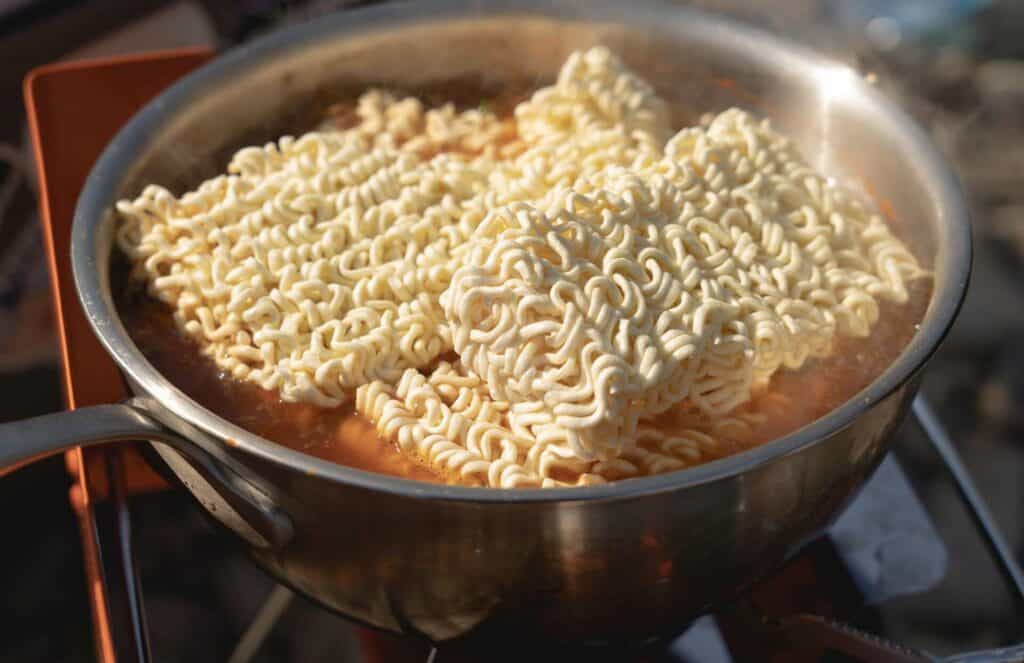
Step 4 – Add a Cup of Vegetables and Cheese
After adding the seasoning and its lovely smell fills up the kitchen, your meal is almost done. For more flavoring, add chopped vegetables, meat, and cheese. This makes it a tad more nutritious and able to fill you up better.
I recommend cabbage and Chinese cabbage, or bok choy, which taste great when cooked, have a low-calorie index and are filled with vitamins and fiber. Also, you can add any cheese you like or omit it from the recipe entirely.
Put all this in after you’ve put the seasoning in.
Great Recipe Articles Always Have Vegetables and Meat In Noodles
If cabbage makes you gassy, I recommend carrots, sweet corn, peas, or green beans. You can slice the carrots into small pieces or julienne them into strips.
For meat, I recommend chicken breast or fried pork steak. Every great Japanese noodle recipe includes vegetables and meat.
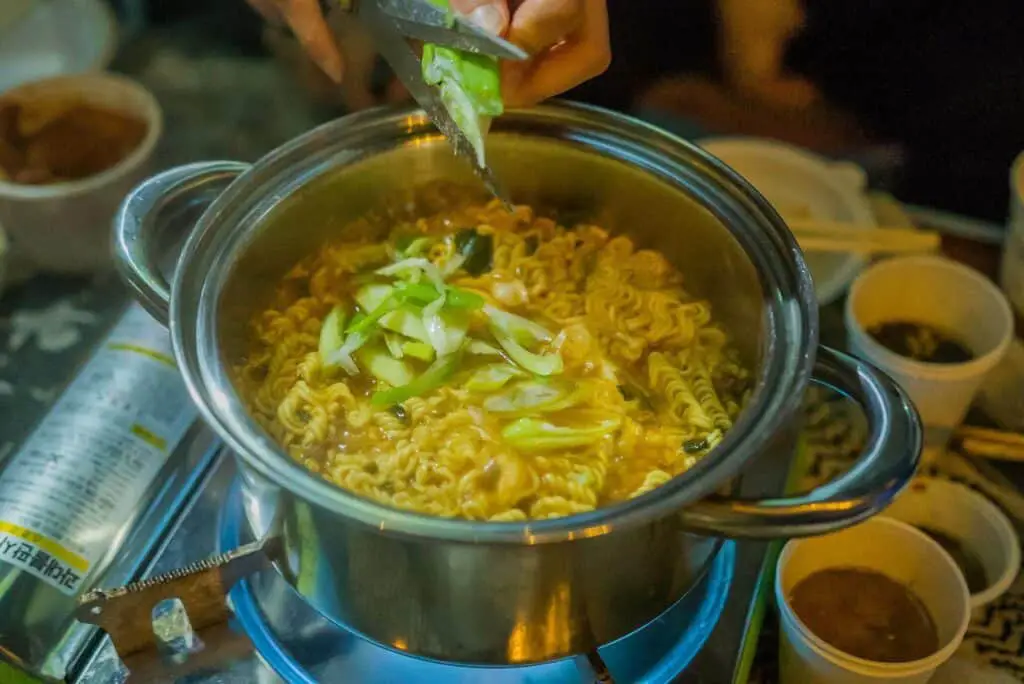
Step 5 – Crack One or More Eggs in the Pot With the Rest
Now, for the fun part – poaching the egg. These aren’t so complex – it’s all about the timing. Since you waited for the water to boil before adding any of the ingredients, you created the perfect base for poaching.
While the vegetables and noodles are boiling, crack open an egg (or more, if that’s what you like) directly into the pot. It’ll start forming a thin white membrane around the yolk; that’s the white cooking.
This Method Will Give You the Best Eggs for Your Soup
How long does it take to cook a ramen egg? With poached eggs, the process is shorter. You can poach one for two and up to four minutes. When you bite into it, it’ll be runny and creamy.
Why Poached and Not Boiled Egg?
Poached eggs are similar to boiled ones, but the cooking process is nearly five times shorter. You don’t have to worry about the egg’s softness or hardness or peel it and ruin half of it; this way, you’ll get a boiled, non-greasy version without investing too much time.
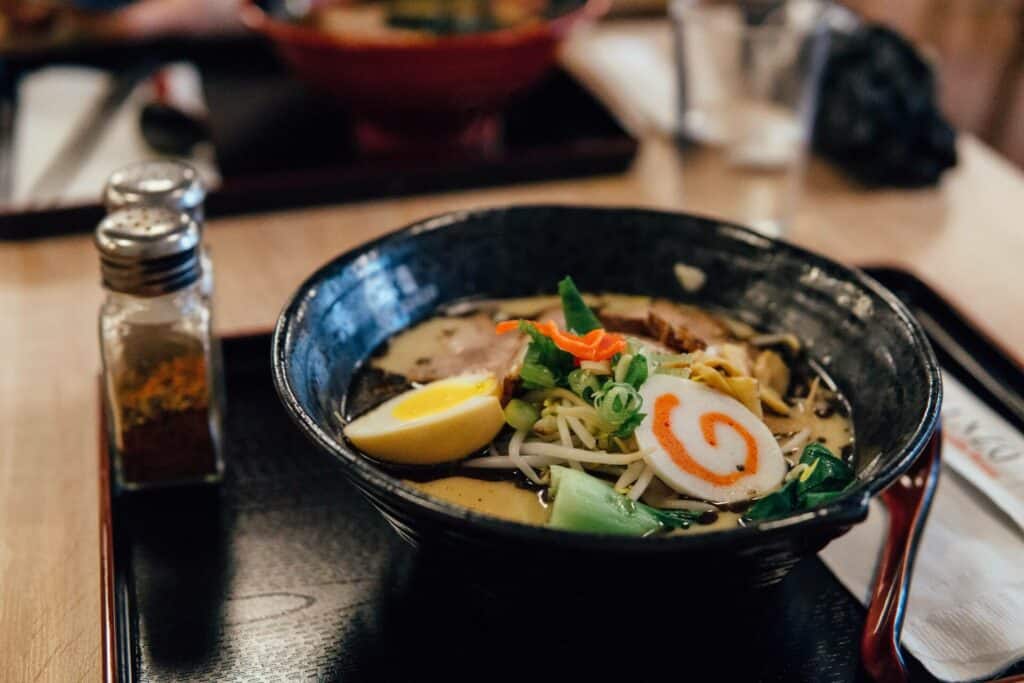
Step 6 – Stir Until Everything’s Poached and Cooked
When the egg lands into the soup safely, feel free to poke around and stir the dish while everything cooks. That way, you’ll spread the seasoning evenly and allow the egg to cook better.
You can even cover it with some noodles to create a warm vacuum. It’ll cook better and faster if surrounded by heat. Stirring will improve the dish, so don’t forget this vital step.
Step 7 – Serve in a Bowl With Some Beef Slices and Garnish
After no more than just five or six minutes, or when everything looks ready, remove the pan from the heat and pour it into a nice, big bowl. You can use a porcelain or ceramic bowl to ensure your meal stays warm.
Finally, add some thinly sliced dried beef and chopped spring onions for extra flavor. These two are almost inevitable in Japanese cuisine as garnish and main ingredients.
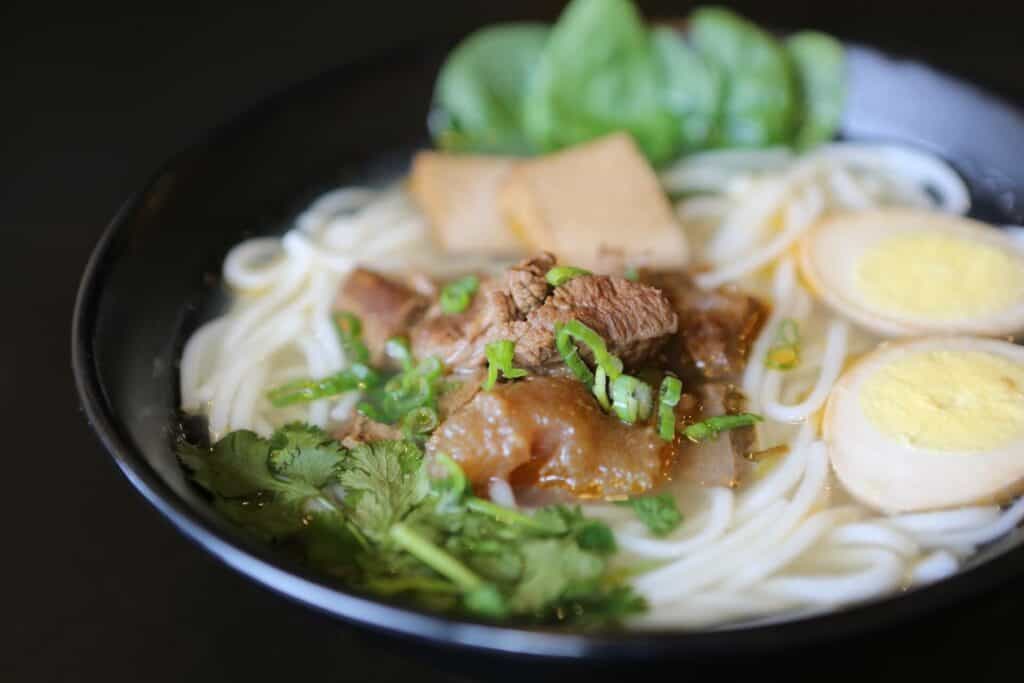
Final Thoughts
This is a quick, easy, and effortless way to poach an egg in ramen. The entire process won’t last you longer than 15 minutes, and by adding extra ingredients, you can make plain old noodle packs taste like gourmet dishes from an authentic restaurant. Don’t wait; give it a try!